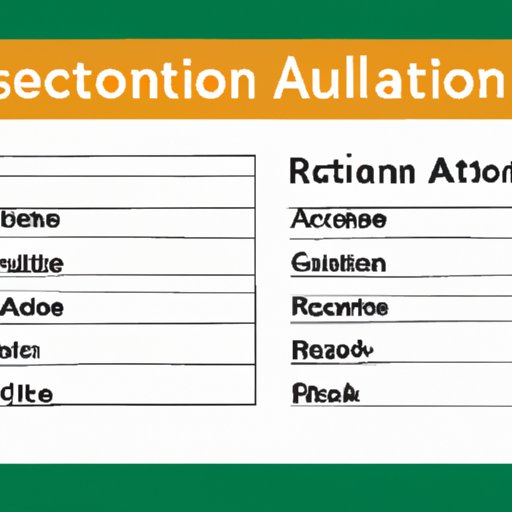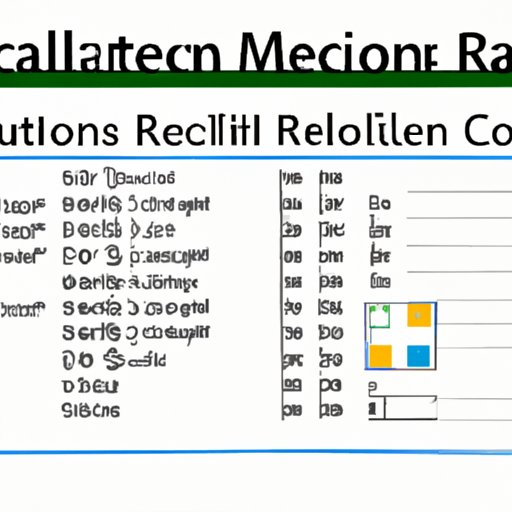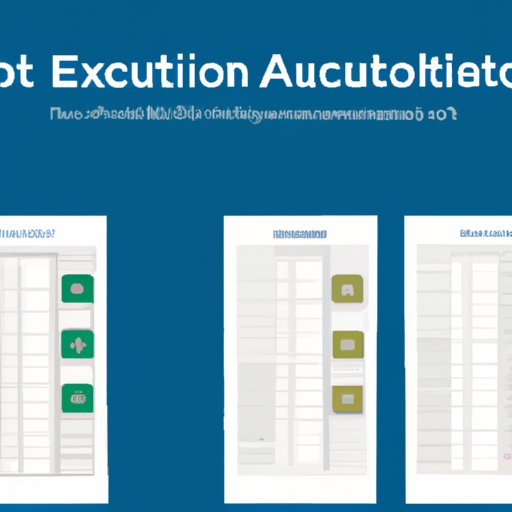Introduction
Reconciliation is the process of comparing two sets of records to ensure accuracy and consistency. It is an important part of any accounting or finance department’s daily operations and can be time consuming and tedious. Automated reconciliations in Excel can greatly reduce the amount of time spent reconciling accounts and help to eliminate errors.
Automated reconciliations in Excel are achieved by using a combination of formulas and functions to compare data from two different sources. This process allows users to quickly identify any discrepancies between the two sets of data and make corrections as needed. In addition to saving time, automating reconciliations in Excel also reduces the risk of human error and ensures that the reconciliation process is accurate and reliable.

Setting Up Automated Reconciliation Templates in Excel
Creating automated reconciliation templates in Excel is relatively simple and straightforward. To get started, you will need two sets of data – one from each source. The first step is to create a new worksheet in Excel and enter the data from both sources into separate columns. Once the data is entered, it’s time to create the reconciliation template.
The next step is to use Excel’s built-in functions and formulas to compare the two sets of data. For example, you can use the SUMIFS function to add up all the amounts from both sources that match the criteria specified. You can also use VLOOKUP to look up specific values from one set of data and compare them to the corresponding values in the other set. Other useful functions include COUNTIF, IFERROR, and MATCH.
Once you have created your reconciliation template, you can save it as a template for future use. This will allow you to quickly and easily generate reports whenever you need to reconcile two sets of data. Additionally, you can use the template to analyze trends over time and spot potential discrepancies more easily.

Troubleshooting Automated Reconciliations in Excel
When working with automated reconciliations in Excel, there are a few common issues that may arise. One of the most common problems is incorrect data entry. If the data from either source is not entered correctly, the reconciliation process will not be accurate. Therefore, it is important to double check all data entries before proceeding.
Another common issue is incorrect formulas or functions. When creating a reconciliation template, it is important to make sure that the formulas and functions used are correct for the data being compared. If the formula or function is incorrect, the reconciliation process will not be accurate. Finally, it is important to remember that automated reconciliations in Excel are only as accurate as the data that is entered. Therefore, it is important to make sure that the data being compared is accurate and up to date.
Best Practices for Automating Reconciliations in Excel
When working with automated reconciliations in Excel, there are a few best practices that should be followed. First and foremost, it is important to make sure that the data being compared is accurate and up to date. Additionally, it is important to double check all data entries and formulas/functions used to ensure accuracy. Finally, it is important to create templates for future use so that reconciliations can be done quickly and efficiently.
For example, if you are reconciling bank accounts, you could create a template that includes the account numbers, opening balances, current balances, and closing balances. This template can then be used to quickly and accurately generate reconciliation reports on a regular basis. Additionally, you can use the template to analyze trends over time and spot potential discrepancies more easily.
Conclusion
Automating reconciliations in Excel can be a great way to save time and increase accuracy. By following the steps outlined above, you can quickly and easily create automated reconciliation templates in Excel. Additionally, by following best practices such as double checking data entries and creating templates for future use, you can ensure that your reconciliations are always accurate and up to date.
(Note: Is this article not meeting your expectations? Do you have knowledge or insights to share? Unlock new opportunities and expand your reach by joining our authors team. Click Registration to join us and share your expertise with our readers.)
